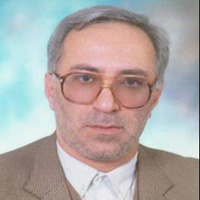Phenomenology of the concept of the village in point of view of the villagers: a case study, the villages of Sumghan and Mula-e-Anbar of Kouhchenar county
Many researchers in the fields of geography, social sciences, agriculture, and environment have defined the village and rural place. In Iran it has been mostly defined for providing government services and from a political-administrative-demographic point of view. However, some researchers and thinkers in Iran have paid attention to other dimensions of rural and rural places such as the rights of places, biological aspects, the system of rural society and its spatial aspects. We know that perhaps one of the first curiosities of any resident of each settlement is an understanding of the biological-residential phenomenon. This requires that they first know its definition and use it as a guide and guideline for the development and progress of that settlement. This becomes even more apparent when researchers and facilitator want to develop rural planning for these settlements with a qualitative methodology. Because when a person offers different definitions of their place of residence with the participation of other people, different needs and wants will be raised. It is possible that by satisfying these needs and wants, and with the help of the villagers themselves, outsiders and stakeholders will develop a settlement.
The method of this research is qualitative as well as fundamental in nature in the sense that it seeks to conceptualize the core of the subject. In addition, it seeks to respond to the development needs of local communities and local and regional development organizations. It also has a phenomenological approach, strong philosophical basis, and an interrogative-deductive strategy. Also, considering the reserves of rural settlements from the definition of the village and its true nature, it seeks to research this phenomenon. During the research process, focusing on rural groups, integrating them into their daily lives in the form of additional participatory workshops using tools such as interviews, group discussion, the concepts of which are used and done in the context of 5 interviews semi-structured and 5 participatory workshops with the participation of rural groups (Agricultural activists, industry and services), youth, executive officials and council, trustees and investors, active population and women.[R1]
We know that perhaps one of the first curiosities of any resident is to understand and become familiar with the biological-residential phenomenon. It is necessary to first know its definition and to consider it as a guideline for the development and progress of that settlement. Therefore, according to the phenomenological method of dominating the research and the participation of the research participants, the following semantic units were suggested from their point of view to define the village: demographic – geographical, functional, social solidarity, sociology, psychological, aesthetics – architecture, environmental, institutional, systematic and spot-spatial.
Re-conceptualizing words such as village can be instructive and a way to open up the needs and wants of a rural settlement, because through the link between its integrated implementation and a systematic look at new approaches of development, it can be considered as an institution to unfold its dimensions. The villages of Sumaghan and Mula-e-Anbar as a biological-residential phenomenon need that at first resident and the rural development planners come up with a comprehensive definition of the village, that itself is done as a guideline for its development. This process becomes more apparent when it plays a role researchers and facilitators should define, as well as develop and plan for these settlements with a qualitative methodology and perhaps phenomenology, and with an interrogative-deductive approach. Also, in new and alternative development subject, when planning for settlement, relying on rural concepts increases its feasibility. Looking at some of the researches done as well as the cores of the research, it can be realized that doing any planning without the participation of the stakeholder in the planning process undoubtedly underscores its efficiency and efectiveness. The outcome of this study was a participatory definition of the village by the participants, which is facilitated by the authors: The village is a collection of geographical spaces and bio-residential spots that have multiple functions of agriculture, production, services, industry, tourism, etc. It has a much smaller population than urban settlements and has a strong social solidarity. And the external and internal relations are very extensive to their far and near settlements. Also, its essential features are the spirit of effort and production.
- حق عضویت دریافتی صرف حمایت از نشریات عضو و نگهداری، تکمیل و توسعه مگیران میشود.
- پرداخت حق اشتراک و دانلود مقالات اجازه بازنشر آن در سایر رسانههای چاپی و دیجیتال را به کاربر نمیدهد.


